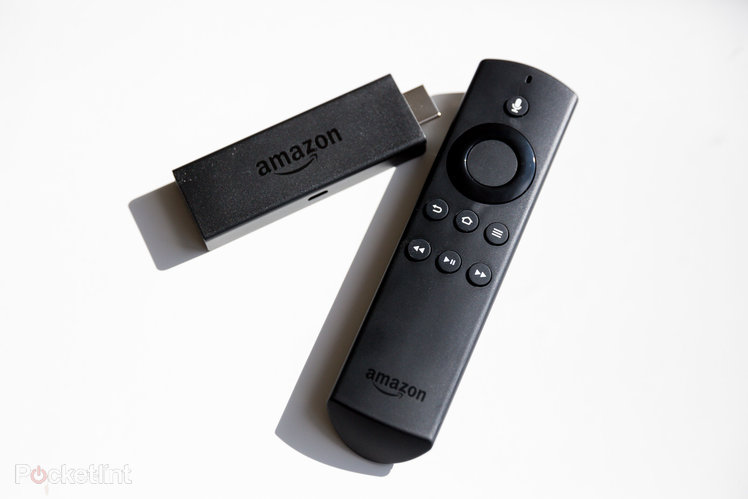
Video streaming dongles have been successful partly because they provide a cheap and cheerful way to turn a dumb TV into a smart one. The Chromecast Ultra, Roku Express and original Amazon Fire TV Stick are often adopted because they are easy, mostly invisible options to add apps and online services to televisions that didn’t have the capability themselves.
However, almost every TV sold these days is equally capable of accessing Netflix, Amazon Video, and the many other streaming platforms, without the need for an external device. So, for any media streamer to be attractive today, let alone a lower-specced dongle, it needs a differentiator: a feature that stands it apart. Something like, say, Alexa voice control support.
- Want 4K content? Check out our review of the Amazon Fire TV Stick 4K review
That’s exactly what you get with the Amazon Fire TV Stick. It’s a media streaming device with the benefits of Alexa voice recognition and interactivity included for good measure. It is, in essence, an Amazon Echo for your telly. But is it any good?
All about voice control
- Built-in Alexa voice-control
- 86 x 30 x 12.6mm; 32g
- Connects via HDMI
Amazon’s virtual assistant has been taking over the world in recent years, with many third-party products supporting Alexa either directly, by offering voice control, or indirectly, by performing smart home functions such as turning the lights on or off (at your request, not randomly).
It stands to reason, therefore, that Amazon expanded its reach beyond Echo speakers in its Fire TV line-up. The Fire TV Stick not only means can you bark commands at the virtual assistant, to which she responds verbally, but you also get ‘Visual Skills’ – cards that pop-up on screen that supply corroborative content to an answer or action.
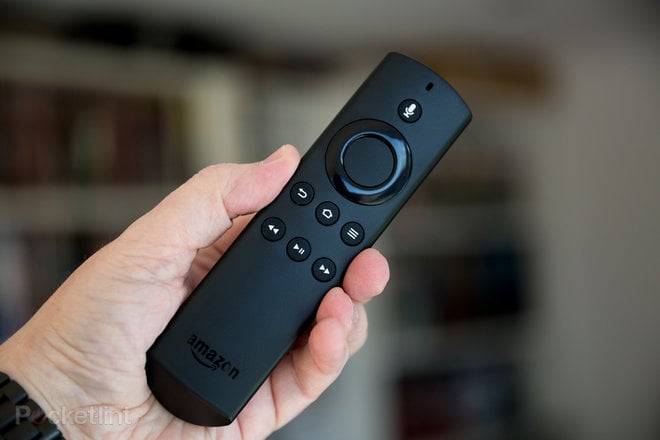
For example, ask Alexa what the last Liverpool score was and she’ll tell you the result while showing extra details from the match on the screen. Ask for the weather and, in addition to the current temperature and climate, you will also see the rest of the week’s outlook.
What’s in the box?
- Alexa Voice Remote included
- Micro-USB port for power; HDMI extender if necessary
- Voice control independent to Amazon Echo (both products not required)
To enable the Fire TV Stick’s new powers, Amazon includes a voice-enabled controller in the box – the eponymous ‘Alexa Voice Remote’. You also get the second-generation Stick, naturally, plus a power adapter, USB cable, and even HDMI extender in case you have to dangle your dongle rather than plug it into a spare HDMI socket on the back of your telly.
Thankfully, our TV has HDMI ports on the side so it tucks in nicely, but some have them ranged on the rear – so if you have a wall-mounted TV you can’t exactly have the Stick poking out the back. In that case, you’ll need the extender.
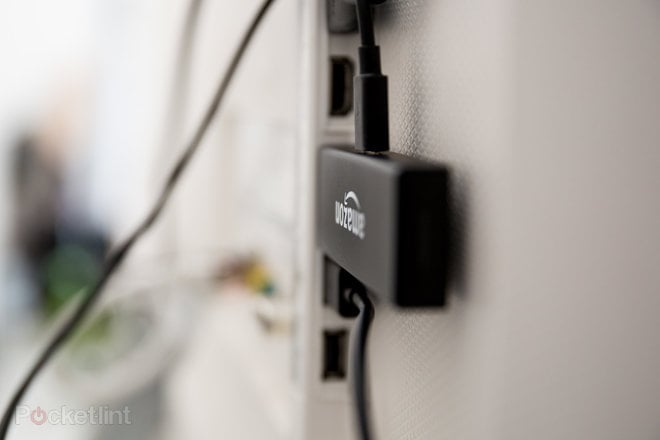
On some sets, you’ll be able to power the Stick through the USB cable attached to a TV’s USB port, but even with a four-year-old LG telly we couldn’t get enough juice to power it correctly, so needed to plug it in with the supplier charger instead – which is what we think most people will end up doing. No problem, just keep a plug socket spare nearby.
The remote is not line-of-sight, as you wouldn’t be able to have the Stick out of view behind the TV otherwise. It also comes with batteries included, which is a reasonably rare treat.
Beefed-up spec, no 4K here though
- 1080p maximum resolution, not 4K
- Dual-band, dual-antenna Wi-Fi 2×2 MIMO 802.11a/b/g/n/ac
- CPU: MediaTek Quad-Core ARM 1.3GHz
- GPU: Mali450 MP4; RAM: 1GB
- 8GB internal storage
- Bluetooth 4.1
As a streaming device, the second-gen Fire TV Stick (which first launched in 2017, then again in 2019 with a tweaked remote – the latter reviewed here) is similar to the original (which launched in 2016) – albeit a touch more powerful. It has a quad-core processor, which keeps things moving quickly when scrolling through menus and starting content. It also has dual-band Wi-Fi (802.11ac) for stable, strong wireless connectivity.
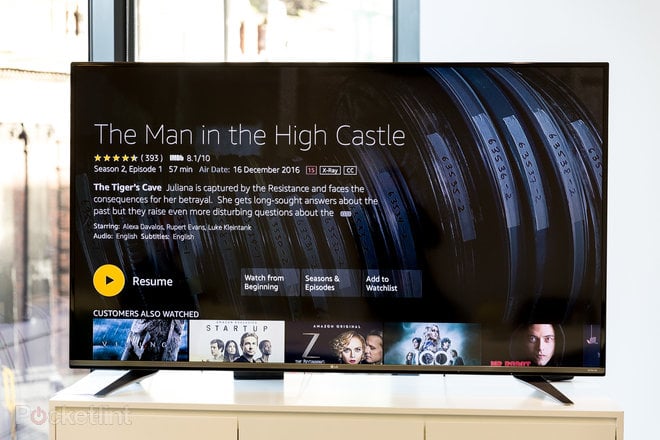
There’s no wired internet via Ethernet here, but that’s not why this Stick can’t stream 4K. It’s because Amazon provides the choice between two devices: this one, at 1080p resolution; and the 4K version, at 2160p resolution (where available). There’s also the larger Fire TV Cube.
What’s it like to use?
The Fire TV Stick sports the same user interface (UI) as any other Fire TV device. That means content is integrated into the experience, with big, graphical embellishments pushing shows and movies front and centre.
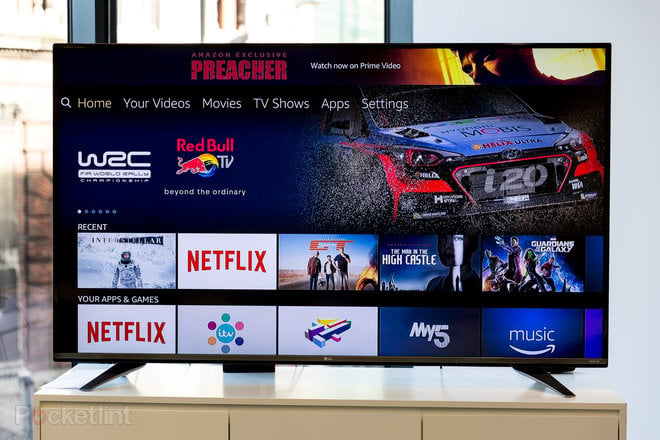
It also brings your most recently accessed content to the top of the menu system, under a ‘recent’ banner, and lumps apps and games together in a single, scrollable bar. Tags along the top provide quick and easy access to your own shows, movies and TV shows in general. It’s all remarkably simple to use and much better presented than the Amazon apps on other TVs and platforms, as they stand.
Perhaps the best feature of the latest UI though is search. Not only are you able to search for content from Amazon, such as films and shows available as part of a Prime subscription, you will also be able to find Netflix programming if you are a subscriber to that. This works with text or voice search and makes video discovery more simple than ever before.
Amazon claims it will add other services in time, maybe even BBC iPlayer, so you only ever need to say “Danny Dyer”, for example, and you’ll get movies and TV shows he’s appeared in from numerous different sources. It’s still not available for iPlayer, but if you search for, say, “Eastenders” then the UI does know to present the BBC iPlayer app as an option to open.
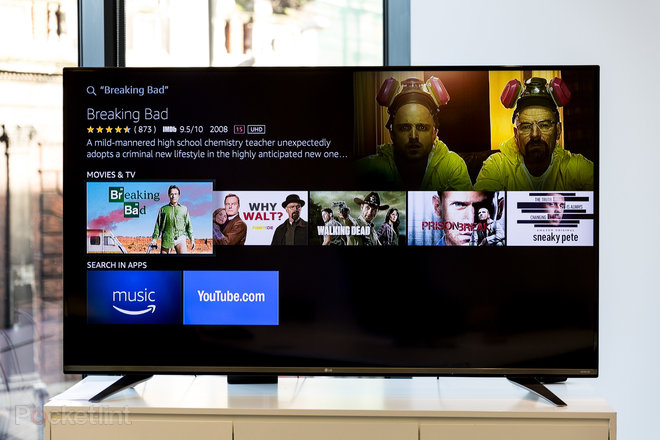
You probably won’t get as much out of the entire experience if you don’t have a Prime membership, and therefore the entire gamut of TV series and movies Amazon offers as part of the subscription, but it does mean that you can still use the device for Netflix browsing alone. Or access all of the terrestrial catch-up services: iPlayer, ITV Hub, All 4, My5 and UKTV Player. Even Spotify is now available.
We’re also impressed with the picture quality and speed of video playback, even with the lack of 4K and HDR (high dynamic range). A show starts almost the second you tap the play button. That in itself might get you to forsake the slower native video streaming apps on your TV for the Fire TV Stick instead.
